15 Mar Asbestos Abatement Guide
Understanding the Dangers of Asbestos
Although asbestos isn’t banned in the U.S., its use is limited. However, asbestos-containing materials (ACM) still pose a danger to the public because they were common building products in homes, schools and other structures built before the 1980s.
Asbestos abatement involves the identification, removal, repair and encapsulation of materials or products in a structure to eliminate the threat of exposure to toxic asbestos fibers. It’s best handled by a professional asbestos abatement company.
“Hiring a professional for abatement is about protecting yourself and your family. I have witnessed firsthand, too many times, people trying to do it themselves. It’s a shame when that happens. It’s not worth the risk.”— Anthony Rich, asbestos inspector
Common Asbestos-Containing Materials in Buildings
Because asbestos doesn’t burn, it was used in many products to resist heat. The “miracle mineral” made these asbestos-containing materials valuable to the building industry.
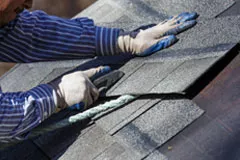
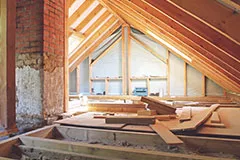
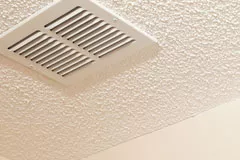
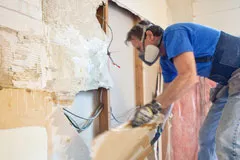
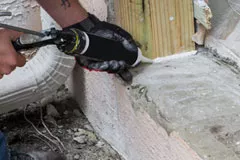
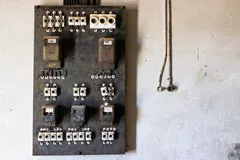
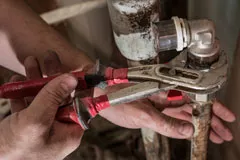
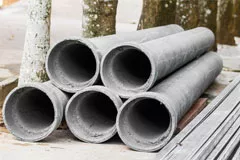
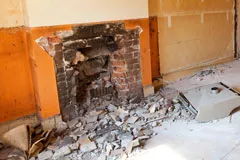
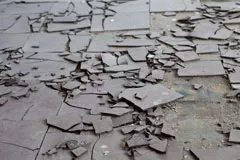
Reasons for Testing a Structure for Asbestos
Although asbestos-containing products are generally safe when left undisturbed, they become brittle over time and can crumble. But the popularity of do-it-yourself (DIY) projects has heightened possible asbestos exposure.
- DIY Remodeling Projects
- Natural or Manmade Disasters Disturbed a Building’s Structure
- You Own a Structure Built Before 1980
- Crumbled, Worn or Broken Asbestos-Containing Materials Found in a Building
“Too many times with asbestos, the hazards are underestimated. If there is going to be what I call a ‘dusty operation’ (sanding, sawing or breaking materials) in an older home or building, you don’t want to do that without having it checked [for asbestos] first. And leave abatement to the professionals.”— Jack Leonard, president of Environmental Management Institute, Indianapolis
Why Is Asbestos Abatement Important?
If damaged asbestos-containing materials are not properly removed by an asbestos abatement company, they can endanger your life and the lives of others who come into contact with asbestos dust, fibers or raw asbestos materials.
Fast Facts About Asbestos
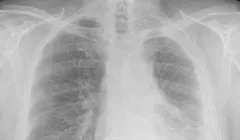
Inhaling or ingesting asbestos can lead to serious health issues such as mesothelioma cancer, asbestosis, pleural plaques and asbestos lung cancer.

About 3,000 people are diagnosed annually with mesothelioma in the U.S. An estimated 10,000 people die annually from some type of asbestos-related disease.
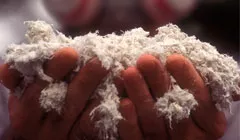
Microscopic asbestos fibers are .01 microns thick (18,000 times thinner than a human hair).
Steps to Take if You Suspect Asbestos Contamination
The most important first step is to not touch the suspicious materials. Let a professional asbestos abatement company handle the job.
- Don’t Sweep, Vacuum or Dust Possible Asbestos Debris
- Don’t Remove Suspicious Materials
- Keep Children Out of Area
- Limit Activities in the Area
- Call a Licensed Asbestos Abatement Company
Tips for Hiring an Asbestos Abatement Company
Asbestos abatement companies are not all the same. Some specialize only in asbestos abatement, while others offer environmental services, demolition services and general contracting services that may include abatement.
Within the U.S., asbestos abatement regulations vary from state to state and city to city, some extend beyond the federal laws that require Occupational Safety and Health Administration (OSHA) and Environmental Protection Agency (EPA) licensing.
Homeowners are not legally required to use a licensed asbestos abatement company, but it is strongly recommended.
Before hiring an asbestos abatement company, verify its qualifications. Find the one that best suits your needs.
Type of Asbestos Abatement Work
-
Class I asbestos work:
Activities involving the removal of asbestos used to prevent heat loss or gain, surfacing asbestos-containing materials and those suspected of containing asbestos.
-
Class II asbestos work:
Removal of nonthermal asbestos-containing materials such as wallboards, floor tiles and sheeting, roofing and siding shingles and construction mastics.
-
Class III asbestos work:
Repair and maintenance operations of any asbestos-containing materials that will likely be disturbed. This is the type most likely used for removing asbestos.
Workers are trained in:

- Pre-Asbestos Abatement Activities
- Work Area Preparation
- Establishing Decontamination Units
- Using Personal Protection (Respirator and Protective Clothing)
- Worker Decontamination Procedures
- Safety Considerations in Abatement Area
- Proper Handling & Disposal of Asbestos Waste
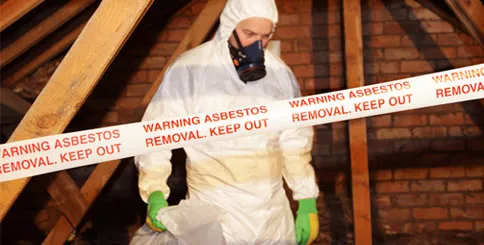
Asbestos Abatement Process
Abatement begins with a certified asbestos inspector who takes samples of suspected asbestos. Samples are analyzed at a laboratory to determine extent of the problem. The asbestos removal can be complex and includes several site preparations.
Site Preparations for Asbestos Removal
- Work area established
- HVAC and electrical systems disabled.
- New electrical system installed to power negative air pressure units that avoid contamination of air outside work area.
- Decontamination enclosure systems installed.
- Seal openings with plastic sheeting and duct tape.
- Wet wipe or use a vacuum with a HEPA (high-efficiency particulate air) filter on nonmovable objects to keep asbestos from becoming airborne.
- Seal immobile items with plastic sheeting and duct tape.
- Cover surface not getting abated with plastic sheeting.
- Post warning signs that read: Danger, Asbestos, Cancer and Lung Disease Hazard, Authorized Personnel Only, Respirators and Protective Clothing Are Required in this Area.
- Clean up using a HEPA vacuum.
- Disposal requires asbestos-containing waste be sealed in leak-tight containers while still wet, then labeled clearly and taken to qualified landfills that have specific requirements for securing the waste and preventing fibers from escaping into the air.
- Vehicles that transport the waste to the landfill have specific requirements and labeling instructions.
Common Asbestos Abatement Equipment
You may see these safety tools at the job site:
“You have to live with the legacy of the past, and the legacy here is all the asbestos is still in place. This epidemic is not going to end anytime soon.”— Epidemiologist Marty Kanarek, University of Wisconsin School of Medicine and Public Health
Asbestos Abatement Costs
Asbestos abatement is costly because of the federal regulations governing the process and protective measures taken to ensure the safety of asbestos abatement workers and the public.

Initial home inspection for asbestos

Sample analysis

Complete removal from an average-sized home
“There are so many factors involved, but abatement can range from a few hundred dollars to a few thousand dollars. And if it’s a certain type of material, it can be tens of thousands of dollars.”— Anthony Rich, asbestos inspector

Commercial buildings can become multimillion-dollar asbestos abatement projects. For example, before the collapse of the Twin Towers at the World Trade Center, estimates were $1 million per floor.
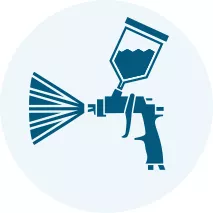
Encapsulating asbestos, which means covering it with a protective barrier to reduce any risk of exposure, can lower abatement costs. Discuss it with the asbestos abatement company before work begins.
Do Your Homework
Now that you understand some of the intricacies of asbestos, the danger it poses to you and others, the importance of properly removing it from a structure and the costs involved, you are better equipped to make the right decision.
Research asbestos abatement companies, ask for references and how they remove asbestos from properties. You, your loved ones and the general public will be far safer when the threat of asbestos exposure is properly eliminated.




No Comments